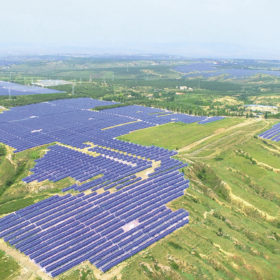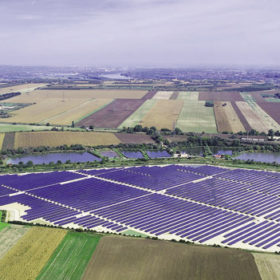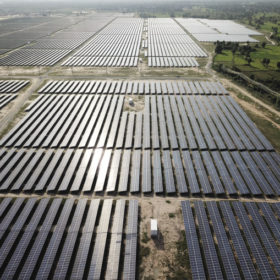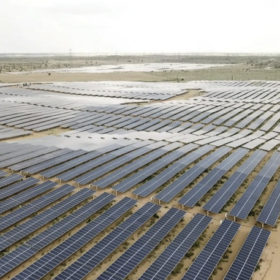Huawei: Leadership on various fronts
For the fifth consecutive year, the analysts at IHS Markit ranked Huawei the No. 1 supplier of photovoltaic inverters globally. The Chinese manufacturer and IT and telecommunications giant has held this top position since 2015. A number of factors account for Huawei’s success in the global PV industry. First, the company’s technology is highly advanced […]
Intelligently upgrading the PV industry
With lower costs, increasing renewable energy portfolio demands and carbon emission reductions, the solar industry has grown at a robust pace – providing many prospects to support a clean energy future. But the continuous development of solar PV also faces a number of challenges. How do we cut the levelized cost of energy (LCOE) when subsidies are decreasing? What should we do to tackle high O&M costs? How do we turn new clean energy into a primary energy source that is both safe and reliable? How do we ensure safe access to PV plants on a large scale? Technological innovation and intelligent transformation are key – and Huawei is leveraging its expertise in telecoms to step up the industry’s game.
Huawei’s latest intelligence: Smart PV For Future
The new president of Huawei’s Smart PV Business Unit, Chen Guoguang, talks to pv magazine about his new role in the company and the future of his division. Increased investment in smart PV R&D and technological innovation are at the top of the agenda. The intelligentization of energy products is also a priority, with much to be gained from the integration of information and communications technologies (ICT) and energy.
Predicting the future for smart PV
Over the next five to 10 years, renewables will assume a larger role as a main power source for electric grids, and PV has a particularly bright future. Considering the latest trends in power electronics technology, PV is quickly evolving down the path to intelligence. Given the rapid development of emerging information and communication technologies (ICT) – such as AI, cloud computing, big data, and 5G – Huawei has an idea of what’s in store for the future of solar PV.
The critical choice for Australian PV: inverter selection
Australia’s slow-to-adapt transmission network has been a major roadblock for renewables in the country, as it drives up costs and causes delays for large-scale projects. As developers, contractors, and investors try to wrap their heads around grid-stability issues, the risks associated with transmission losses and connection problems continue to weaken confidence in grid-scale renewable energy investment. FRV Australia Managing Director Carlo Frigerio discusses the market and the importance of choosing the right inverters for the country’s rigid power network.
Navigating Europe’s policies, markets, and trends
Europe is widely considered a renewable energy powerhouse, at least with regards to technology establishment and kick-starting the green economy. Installation trends and markets are expanding – and Covid-19 could provide new opportunities for the continent.
Adding solar for a fully fueled story in the Middle East
Jad Jubaili’s business idea to build a solar division under his company, Jubaili Bros. – traditionally a trader of diesel generators – came to fruition in 2017. This year, Jubaili Bros. opened its first business branch that is 100% dedicated to solar in Pakistan. pv magazine met with Jubaili to discuss the fully fueled future of the Middle East and Africa (MEA) Region – megasolar and smaller PV projects alike, oil price slumps, Covid-19, and technological developments.
An eye on growing Asian markets
Over the past decade, the entire Asian continent has soared in its power generation capabilities, bolstered by rapid economic growth. As costs have continued to decline for solar photovoltaics – coupled with the technology’s ability to provide clean, emissions-free power – solar has become one of the most important energy sectors for many Southeast Asian nations. The rising deployment of solar PV has been significant – in some markets more than others.
Moving from grid- following to grid-supporting
Solar PV generation is one of the world’s most promising technologies for a sustainable energy future. However, as solar and other intermittent renewable energy sources increasingly enter the grid, the establishment of grid connections has become a challenge that could threaten future expansion. Now, solar PV technology is rapidly moving from a passive role to an active one, as it takes on a starring role to support electric utility power grids.
Europe’s emerging PV markets
For large-scale installations, Hungary and Greece are two of Europe’s emerging solar PV markets. The solar PV sector in the two countries kicked off years ago predominantly via feed-in tariff (FIT) remuneration policy schemes. In the case of Hungary, FITs created a PV market primarily for small systems up to 500 KW in size, while Greece’s FIT supported both small-scale installations and larger systems with multi-MW capacity. But today’s picture has changed significantly – creating both new opportunities and challenges.






